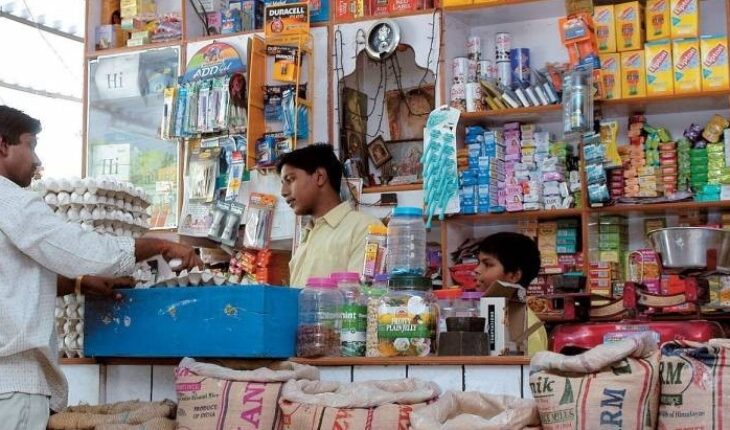As India’s retail sector continues to evolve, the competition between e-commerce, quick commerce, large retail chains, and small shops will only intensify. The future of retail in India lies in coexistence.

In recent years, India’s retail landscape has transformed dramatically. The emergence of e-commerce giants like Amazon India and Flipkart India, the rapid rise of quick commerce platforms such as BlinkIt, Instamart, and Zepto, and the dominance of large retail chains like D’mart, Vishal Mega Mart, Reliance Digital, and Smart Bazar have altered the traditional consumer behavior of visiting neighborhood kirana stores for daily needs. Meanwhile, the rise of direct-to-consumer (D2C) sales through big brands’ websites adds another layer of competition. All these developments leave one major player in a precarious position: small corner shops and general stores.
Amazon and Flipkart have long been pioneers in e-commerce, offering consumers convenience, variety, and competitive pricing. Focusing on everything from electronics to groceries, these platforms have seen explosive growth. As of 2023, e-commerce contributed to 7-8% of India’s total retail sales. However, even these giants are feeling the heat from a newer category: quick commerce.

Quick commerce companies like BlinkIt, Instamart, and Zepto cater to a different consumer need–instant gratification. These platforms promise deliveries of groceries and essentials in under 30 minutes, a far cry from the standard 2-3 day wait for e-commerce deliveries. Quick commerce has quickly become the go-to option for time-strapped consumers in urban areas, especially in metro cities like Delhi, Mumbai, and Bengaluru. According to a Redseer report, quick commerce is expected to grow 10-15 times by 2025, potentially capturing a $5.5 billion market.
With this growing traction, e-commerce platforms like Amazon and Flipkart are concerned. BlinkIt, for instance, reported delivering over 1.25 lakh orders daily across major Indian cities in 2023. Zepto, with its hyperlocal delivery model and dark stores, is expanding at a breakneck pace. These platforms are cutting into the grocery segment of e-commerce giants, forcing companies like Flipkart to revamp their grocery delivery services.
The competitive mix includes retail behemoths like D’mart, Vishal Mega Mart, Reliance Digital, More, and Smart Bazar, which offer massive product variety and low prices, targeting the value-conscious Indian shopper. D’mart, for example, operates on a low-margin, high-volume model, drawing customers from large cities and tier-2 and tier-3 towns. As of 2023, D’mart had over 300 stores nationwide and continues to grow, tapping into markets traditionally served by small kirana stores.
Another trend is the shift of big brands toward their own D2C websites. This trend allows consumers to buy directly from the brand, bypassing platforms like Amazon and Flipkart. For instance, brands like H&M, Nike, and Apple have successfully launched their e-commerce channels, offering exclusive deals and direct customer engagement. This poses another threat to both e-commerce platforms and traditional stores.
In the face of these developments, small kirana shops and general stores need help to compete. According to a survey by the Confederation of All India Traders (CAIT), over 40% of small retailers have reported a significant drop in foot traffic and sales since the rise of e-commerce and quick commerce. The situation has even attracted the attention of policymakers. Recently, Union Minister Nitin Gadkari spoke about the challenges posed by e-commerce to local shopkeepers, urging better regulations to create a more level playing field. Gadkari highlighted the need for policies that protect small businesses from being wiped out by big players.
Despite the seemingly insurmountable competition, small stores can still find ways to survive and thrive in this new retail environment. They can adopt technology, focus on customer relationships, offer locally sourced goods that may not be available on large platforms, and engage in community activities to meet new buyers. The future of retail in India lies in coexistence. Big players will continue to grow, but small kirana stores, with their local charm and adaptability, will always have a place in the Indian consumer’s heart—provided they adapt to the times.
The writer is a senior journalist and columnist. Views are personal. Email: narvijayindia@gmail.com




